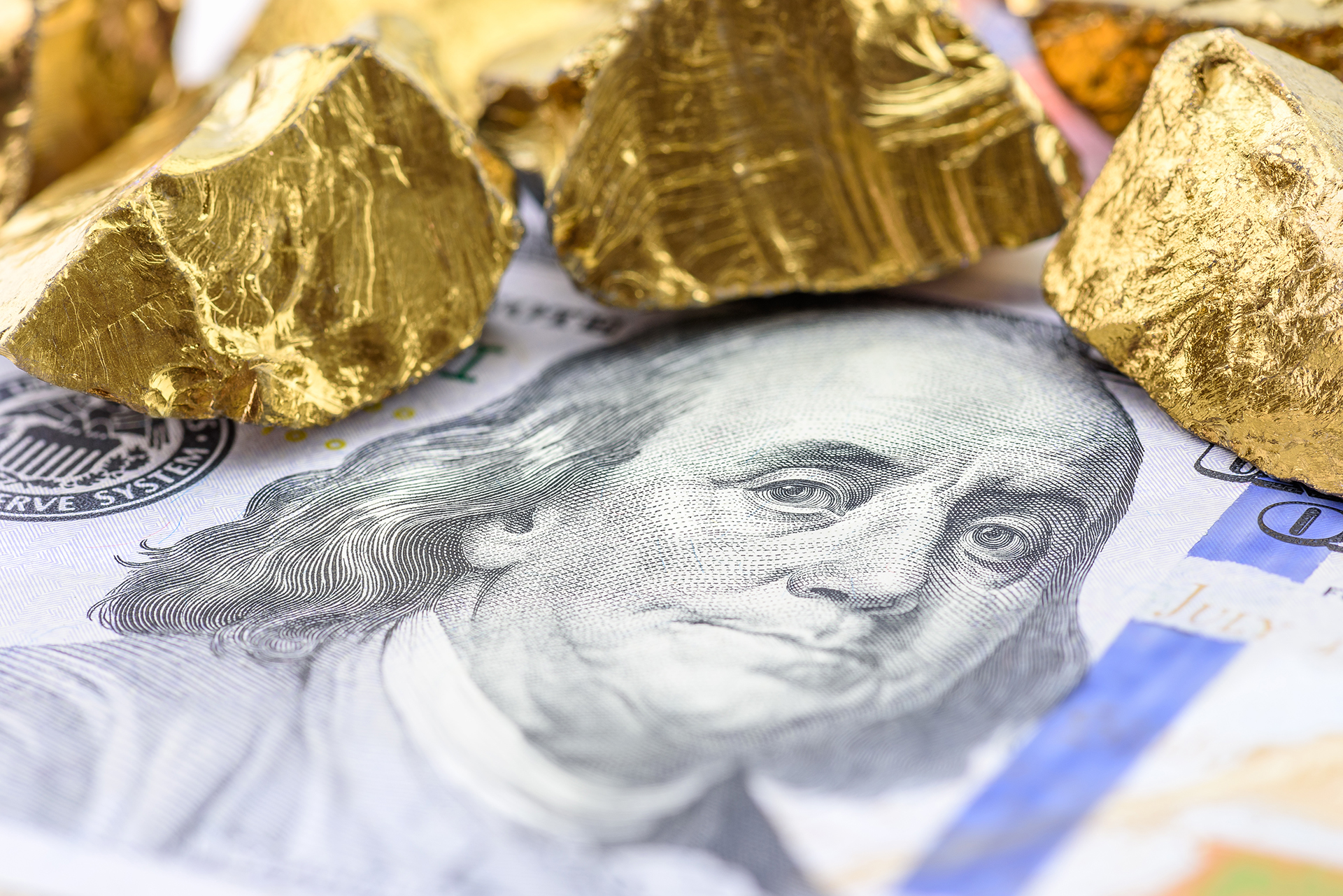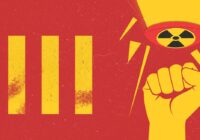For the first time in 40 years, inflation has spiked in developed markets, reaching double digits in many countries. Calls for a return to a gold standard are getting louder. The list of supporters includes names such as former US president Donald Trump, the American Institute for Economic Research, and US politician Ron Paul. In 2022, US Congressman Alexander Mooney went as far as introducing a bill to “define the dollar as a fixed weight of gold”.
Alan Greenspan, former chairman of the Federal Reserve Bank, in a 2016 interview stated “If we went back to the gold standard as it existed prior to 1913 it would be fun. Remember that the period 1873 to 1913 was one of the most progressive periods economically that we have had in the United States.”
Current chairman Jerome Powell, however, does not think a return to the gold standard would be a good idea. Economist John Maynard Keynes famously referred to gold as a “barbarous relic,” which was no longer needed as a backing for currency.
Is the Reckless Swiss National Bank Endangering Its Independence?
What is a gold standard and why is gold valuable?
A gold standard is a monetary system where a country’s currency has its value linked to gold. This can be done directly, by setting a fixed price of gold to the dollar, or indirectly, by other currencies setting a fixed price in relation to the dollar, thereby linking indirectly to gold. One could imagine a full gold standard, where 100% of paper money issued must be backed by gold. Another option is a partial backing, covering only a fraction of money supply that is backed by gold. Under the Bretton Woods currency system, only non-US official holders of dollars (i.e. central banks) were able to exchange dollars into gold at the fixed price of $35 per ounce. Private ownership of gold in the US was outlawed under President Franklin Delano Roosevelt in 1933. President Ford legalized gold ownership in 1974.
The amount of above-ground gold is limited (estimated around 200,000 tonnes). The amount of gold contained in ores has been declining as most rich deposits have been exploited. The average grade of gold mines has fallen to 1 to 5 grams per ton. Large amounts of energy are needed (to crush and transport rock, for example), limiting how much gold can be economically mined. Over the past decade, annual mining output ranged from 2,800–3,600 tonnes, adding less than two percent annually to the stock of gold available.
Pros and cons of a gold standard
The idea behind a gold standard is to ensure a stable currency that is the bedrock of a well-functioning economy. A currency collapse impoverishes large sections of the population. This could lead to political extremism, and, ultimately, threaten democracy. Historians point out how hyperinflation in Germany led to the rise of Nazis.
There are several advantages to a gold standard, which are as follows:
- Linking the growth of money supply to the growth of gold stocks would keep inflation in check, thereby ensuring monetary stability.
- Government spending would be limited to the amount of tax receipts. Any deficit financing via debt issuance would require additional gold.
- Central banks would be immune from political pressure as the amount of money in circulation is determined by gold.
However, there are considerable drawbacks, which are as follows:
- Under a gold standard, growth of money in circulation would be severely restricted and could suffocate economic growth.
- Fixed supply of money would be deflationary, and most likely lead to a period of depression with bankruptcies and high unemployment.
- The expansion of money supply would depend on successful gold mining operations and continued investment in exploration of new deposits.
- Gold standards in the past might only have worked because the stock of existing gold was much lower. So an increase in the stock of gold was possible. The 46% growth rate of gold stock between 1900 and 1909 would be impossible to repeat today.
- Policy makers would be unable to respond to economic shocks.
- Not all countries have equal access to gold for lack of gold mines or existing reserves.
- International trade deficits, if settled in gold, would, over time, lead to a depletion of gold reserves, leading to a balance of payments crisis coupled with the inability to pay for critical imports.
- In the (unlikely) event that the amount of gold available would allow for additional debt to be issued, who would be entitled to do so? The government? Banks? Households? Who would decide on who has access to fresh debt?
The problem with a gold standard
In August 1971, US President Richard Nixon “temporarily” suspended the convertibility of the US dollar into gold, effectively ending the gold standard. Since then, the total amount of US dollar debt outstanding has increased from $1.6 billion to $92 trillion — an annual expansion rate of 8%. During the same time, gross domestic product (GDP) has grown from $1.1 billion to $25.7 trillion, an annual increase of 5.8%. Debt, synonymous with “money,” is growing faster than GDP.
Most economic activity is dependent on the availability of credit. An increase of average 30-year mortgage rates in the US from 2.7% at the end of 2020 to over 7% in October 2022 has led to a decrease in existing home sales from 6.5 million to 4.1 million, a 36% reduction. Potential homeowners without access to debt would have to accumulate the entire purchase price through savings for an “all-cash” deal, which would exclude most people from being able to afford a home in their lifetime.
Proponents often counter that a gold standard could be flexible, with adjustments of the amount of gold backing (downwards) or the price of gold (upwards, hence devaluing the currency) as necessary. But how would that be different from the current system? A flexible gold standard would let imbalances accumulate over time, require large adjustments, introduce speculation, financial friction, and potentially unintended consequences. The cure could turn out to be worse than the disease.
The current monetary system is unsustainable
The current fiat monetary system seems unsustainable in the long run, for mathematical reasons.
First, it is impossible to create money without simultaneously creating an equal amount of debt. The current system is “damned” to increase debt continuously to enable the economy to grow. Given positive interest rates, debt with interest owed is an exponential function (interest on interest in subsequent periods), which is a problem in a world of finite resources.
Second, the marginal utility of debt has decreased as debt levels increased. Since 2007, US GDP increased by $11 trillion, while the amount of debt outstanding grew by $40 trillion. In other words, an additional dollar of debt generates only 27 cents of additional GDP. Interest on debt is owed annually (and increases the debt pile), while GDP resets on January 1st to zero. It gets harder and harder to generate additional GDP with additional debt.
Third, the amount of interest due on rising debt levels is reaching dangerous levels. According to the Institute of International Finance (IIF), the global ratio of debt to GDP stands at 343%. If we (generously) assume an interest rate of three percent, more than 10% of GDP is siphoned off the economy for interest payments – every year. This does not even include repayment of principal.
Is return to the gold standard inevitable?
Would a crisis or collapse in the current system open the way for a return to the gold standard? Central banks, while denying gold had any monetary function, still hold more than 36,000 tonnes of gold valued at more than $2 trillion at current market prices ($1,838 per ounce; 1 metric tonne = 32,150.75 troy ounces). Central banks reduced their gold holdings from 1968 to 2008. Interestingly, gold sales ceased after the “Great Financial Crisis” of 2008/9, and central banks began purchasing between 250 and 750 tonnes annually.
Over the past two decades, purchases have been led by countries mostly outside the Organisation for Economic Co-operation and Development (OECD ), led by Russia (1,875 tonnes), China (1,447 tonnes), India (428 tonnes), Turkey (373 tonnes) and Kazakhstan (324 tonnes).
In absolute terms, the largest holders of gold are the US (8,133 tonnes), Germany (3,355 tonnes), the International Monetary Fund (IMF), (2,814 tonnes), Italy (2,452 tonnes) and France (2,437 tonnes), mostly “old world” countries. Members of the euro-area, including the European Central Bank (ECB ), hold a combined 10,771 tonnes. But none of those countries are adding to their holdings, since doing so could signal to markets a dwindling confidence in their own currencies. Emerging market economies have, in absolute terms and relative to GDP, to catch up to developed ones.
The advantage of gold holdings is evident: in a currency crisis, a central bank could arbitrarily set a (dramatically increased) gold price, thereby realizing a large revaluation gain on existing gold holdings. Euro-area central banks could, for example, by raising the price of gold ten-fold, generate a book gain of roughly 6 trillion euros. In a recent interview, Klaas Knot, Governor of the Central Bank of the Netherlands, suggested gold revaluation as a tool to remedy any solvency crisis.
As a bonus, gold revaluation would lead to windfall profits at private owners, potentially providing consumers with a boost in otherwise dire economic circumstances. According to reports, German citizens privately hold more gold than the Bundesbank, Germany’s central bank.
For the US, the outcome is less clear. Data on private ownership of gold in the US is not available. The Federal Reserve, unbeknown to most, does not own any gold. The Gold Reserve Act of 1934 required it to transfer all of its gold to the Treasury. In exchange, the Fed received a “non-redeemable gold certificate,” valued at the “statuary” gold price of $42.22 per ounce, a fraction of today’s market price ($1,838 per ounce). The Fed is “owed” 261 million ounces, but only at the book value of $11 billion, due to the mandatory gold price of $42.22.More than 75% of US gold is actually controlled by the military, as it is stored at West Point and Fort Knox.
The European Central Bank (ECB), on the other hand, values its gold at market prices (currently worth around EUR 600 billion, about $633 billion), listing it above all other assets. The ECB is free to sell or buy gold in the market.
The Federal Reserve cannot sell any gold since it does not own any. It might also have difficulties buying gold at market prices since this would, due to the above-mentioned mandatory gold price of $42.22, create an immediate loss on the position.
The Fed’s hands are tied regarding gold. As the issuer of the world’s reserve currency, demonetizing gold was necessary for the dollar to replace gold as prime reserve asset for central banks around the world.
This reveals a fundamental rift across the Atlantic Ocean: European central bankers are, albeit covertly, gold-friendly, the Federal Reserve is not. The former is ready to use gold as a tool to recapitalize its central bank (and subsequently commercial banks), while the latter is not.
In case of a break-down of the current monetary system, an international conference (akin to Bretton Woods) would unlikely be able to agree on a common position on the role of gold. This would signify the end of the dollar as the world’s reserve currency. In the ensuing turmoil, market participants would value currencies issued by central banks with sufficient gold holdings. Central banks will not revert to a gold standard, given before mentioned disadvantages, but use their revalued holdings to restore confidence in the continued use of paper currencies.
The views expressed in this article are the author’s own and do not necessarily reflect Fair Observer’s editorial policy.
Support Fair Observer
We rely on your support for our independence, diversity and quality.
For more than 10 years, Fair Observer has been free, fair and independent. No billionaire owns us, no advertisers control us. We are a reader-supported nonprofit. Unlike many other publications, we keep our content free for readers regardless of where they live or whether they can afford to pay. We have no paywalls and no ads.
In the post-truth era of fake news, echo chambers and filter bubbles, we publish a plurality of perspectives from around the world. Anyone can publish with us, but everyone goes through a rigorous editorial process. So, you get fact-checked, well-reasoned content instead of noise.
We publish 2,500+ voices from 90+ countries. We also conduct education and training programs
on subjects ranging from digital media and journalism to writing and critical thinking. This
doesn’t come cheap. Servers, editors, trainers and web developers cost
money.
Please consider supporting us on a regular basis as a recurring donor or a
sustaining member.
Will you support FO’s journalism?
We rely on your support for our independence, diversity and quality.







Comment